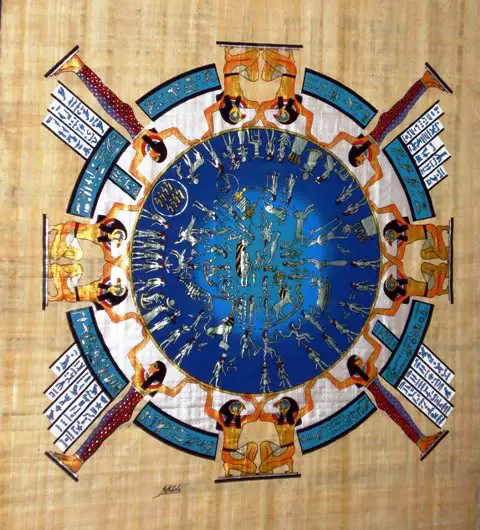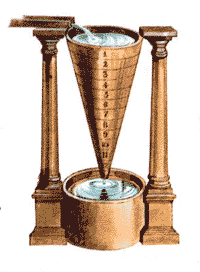The history of human civilization is a history of evolution. The study of Egyptian history enables us to understand the progress they achieved through their inventions. A great number of ancient Egyptian inventions are used in our everyday lives.
Papyrus, Blank Ink, Calendar, The ox-drawn plough, Clocks, the Pyramids, the hieroglyphic system of writing, The system of a census, The shaduf, locks and keys are only a few of their discoveries.

The world owes the invention of paper to the Egyptian papyrus. The first use of papyrus paper is believed to have been in 4000 BC. Papyrus was made from an aquatic plant, Cyprus papyrus.
The climate of Egypt preserved papyri in the ruins of ancient towns and cemeteries.The quality of papyrus paper is evident from the fact that they are still intact about 5000 years after they were written on.
Black Ink was a useful achievement of Egyptians. To make it, the Egyptians mixed soot with vegetable gum and bee wax. They substituted soot with other organic material to make ink of different colours. The fact that centuries old Egyptian manuscripts are still legible tells us the quality of their ink.
Ancient Egyptian Inventions
Calendar
Ancient Egyptians are said to have invented both the modern calendar and the leap year system which is followed even today. They organised the year into 365 days and the days into 24 hours. They made the first leap year calendar in 238 B.C. and added an extra day every fourth year.
Ox-drawn

Ox-drawn ploughs appeared in Egypt as early as 2500 BC. It proved quite helpful to the farming population of Egypt. They attached ropes from their ploughs onto the oxen, usually their horns.Even today; this is used in the rural community.
Clocks
Clocks were of two types; the sun clocks and the water clocks. Sun clocks were formed by means of the construction of Obelisks, tapering monuments. The clock worked much like a sundial, by watching the moving shadows throughout the day. By doing this, the Egyptians were able to divide the day into morning, afternoon, and night.
